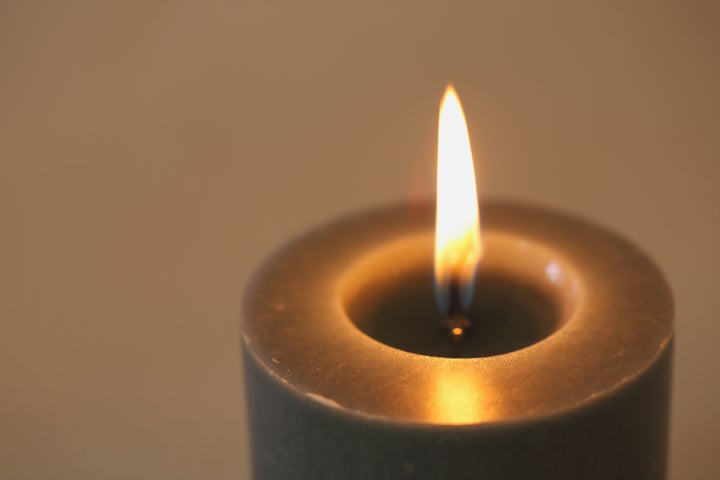
We’re finally (well, I hope we are) out of the trenches of what was that god-awful heatwave, now we’re transitioning into what appears to be cool crisp evenings, earlier sunsets, and the appearance of red and orange leaves scattered around the pavement.
I don’t know about you, but autumn to me, is about lighting as many appropriately-themed candles as I possibly can. No really, the amount of pumpkin spice-scented candles I have in my home should be studied. That said, there’s probably been a million times I’ve improperly lit a candle.
Experts at Arran Sense of Scotland mention there’s a lot more you can do to maximise the aroma, and ensuring safety in your home requires a lot more than just striking a match – you have an open flame blowing freely in your home, y’know.
Arran Sense of Scotland gives us the best practices for candle usage, including the best place to put them in your home and how to care for them so you can have the best experience possible.
Proper scent diffusion
“To achieve the most potent aroma, burn your candle until the melt pool (the circle of melted wax surrounding the wick) extends to the edges of the jar,” Arran Sense of Scotland explains.
“For most candles, this takes around 2-3 hours. Failing to do so can cause “tunnelling,” where only the wax near the wick melts, diminishing the overall scent.”
Harlem Candle Company mentions that if “tunnelling” begins, it will appear as if the flame is carving out a vertical tunnel in the centre of the candle, instead of burning evenly across it’s container.
“Within the tunnel, the wax directly underneath the flame quickly melts into a liquid while the surrounding wax remains hard,” Harlem Candle Company says. “This causes the tunnelling to become worse over time.”
“Once the wick descends deeper into the surrounding wax, the flame won’t be able to get enough oxygen to sustain itself, causing the candle to go out.”
Burn time
“It may seem counterintuitive, but shorter burn times often provide the most powerful scent throw. Aim for 2-4 hours per session for best results,” Arran Sense of Scotland mentions.
You’ll also probably want to burn your candle till it reaches the edge of the container, so you can avoid “tunnelling.”
You shouldn’t burn your candle for too long either, National Candle Association states: “burning a candle for too long will cause carbon to collect on the wick, leading it to “mushroom.”
“The wick will then become unstable and produce a dangerously large flame. Plus, your candle will start to smoke and release soot.”
Layering scents
Much like layering scents when wearing perfume, you can do the same thing with candles – trust me, it’s great.
Arran Sense of Scotland says: “If you enjoy a specific scent profile, consider layering similar or complementary scents in different parts of your home. This creates a rich, multi-dimensional aromatic environment.”
When layering scents, Parks London mentions going for scents that complement each other, unlike similar ones that could confuse your nose.
“Just as a perfumer composes a fine fragrance, or a chef creates a delicious dish - balance and harmony is everything,” Parks London mentions.
Refreshing the scent
Arran Sense of Scotland tells us that to keep the scent strong over time, you should allow the candle to completely solidify between burns. This allows the oils to stabilise and offers a more potent scent whenever you decide to burn your candle.
In case you didn’t know, there’s a lot that goes into looking after your candles as well. Arran Sense of Scotland shares some tips and tricks you can use to look after them, ’cause if anyone knows how expensive candles can be – it’s me!
Wick Trimming
“Always trim your wick to 1/4 inch before each burn. This ensures a cleaner burn, minimising soot and smoke, and extends the life of your candle.”
Real Simple clarifies that taking care of your candle starts even before you burn your candle for the first time: “Before you light your candle, double-check your wick’s length.”
They say If it’s longer than the recommended 0.25 inches, you can use scissors (or a wick trimmer) to trim it: “Try to be as precise as you can. A too-short wick can get lost in a sea of melted wax and fail to light.”
Snuff, don’t blow
“Snuffing out the flame will reduce smoke and soot, preserving the integrity of your candle’s fragrance.”
Arran Sense of Scotland recommends using a wick snuffer (which I had no idea existed – we learn something new every day) or gently dipping the wick into the melted wax to extinguish the flame.”
Cool and cover your candle
“After extinguishing your candle, let it cool and harden completely before covering it or moving it.”
They explain that covering your candle helps keep dust and debris out, preserving the fragrance for future burns – so if your candle came with a lid, go ahead and pop it on once done burning it.
That said, you shouldn’t pop the lid on immediately after the candle stops burning. Why, you ask? Harlem Candle Company expressed that some candle lids aren’t meant to be used that way.
“Some candle lids are purely decorative, made from wood or plastic, or contain rubber seals that can melt or deform when exposed to heat.”
Secondly, “the lid traps smoke and soot within the jar when the flame goes out.”